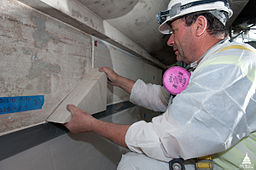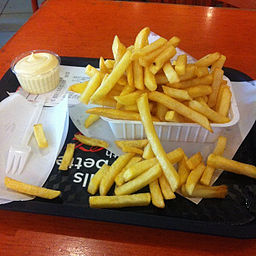\ˈdəch-mən\
I will confess that part of the fun is sneering at the conspicuous consumption exhibited by some of the homeowners (“Marble tile? In the KIDS’ bathroom?” I mutter. “And you’re making your roof gutters ENTIRELY OUT OF COPPER??” )
And part of it is the Schadenfreude when the plumbing guy makes his first descent into the basement and intones Cassandra-like (if Cassandra had been blessed with a thick Boston accent): “Well, there’s a fair bit of seepage here under the sub-floor.”
But for the most part the show is extremely soothing. The problems are so practical: a drafty attic, a crumbling deck, an inconvenient doorway. Competent workmen solve them all. They hammer and saw and lay bricks, and eventually the homeowners move back in to shiny new kitchens and much-diminished bank accounts.
Plus the workmen speak a wonderful language—full of routers and bullnoses and rabbits. And at least once in every season someone has occasion to fix a broken doorjamb or re-set a window and announces that he’s going to use a “dutchman.”
| In the building trades, a “dutchman” is a piece of wood or stone that is carved to shape and used to fill a gap or repair a broken or rotten section of something. Interesting, but why call it a dutchman? I ran the question past a couple of real Dutchmen (and Dutchwomen) of my acquaintance. Had they heard of this term? What do Dutch people call this kind of little patch? Being primarily mathematicians, however, my friends could offer little insight. |
The English workmen, being set in their ways (and possibly seeing their own livelihood compromised by these interlopers), viewed this approach with considerable scorn--a despicable shortcut countenanced only by sots and foreigners. They coined the term “dutchman” to refer to the act of covering up sloppy workmanship, whether with a plaster veneer or a wooden patch. After a while, though, even the nativist English realized that wattle and daub was a huge hassle and the new technique was faster, cheaper AND allowed for more decorative detail. And gradually the term “dutchman” lost its pejorative edge and even became a complimentary nod to the frugality of a people who will carefully patch a flaw rather than replacing the whole beam.
| So while in English Dutch is Dutch and German is German, in Dutch duitsch is German and Nederlands is Dutch. And in Germany Dutch is Holländisch and German is Deutsch. And in France German is allemande and Hollandaise is sauce. Which you can get on French fries. In Belgium. It is things like this that make me long for the relative simplicity of seepage under the sub-floor. And a dutchman to smooth out the uneven spots. |



 RSS Feed
RSS Feed